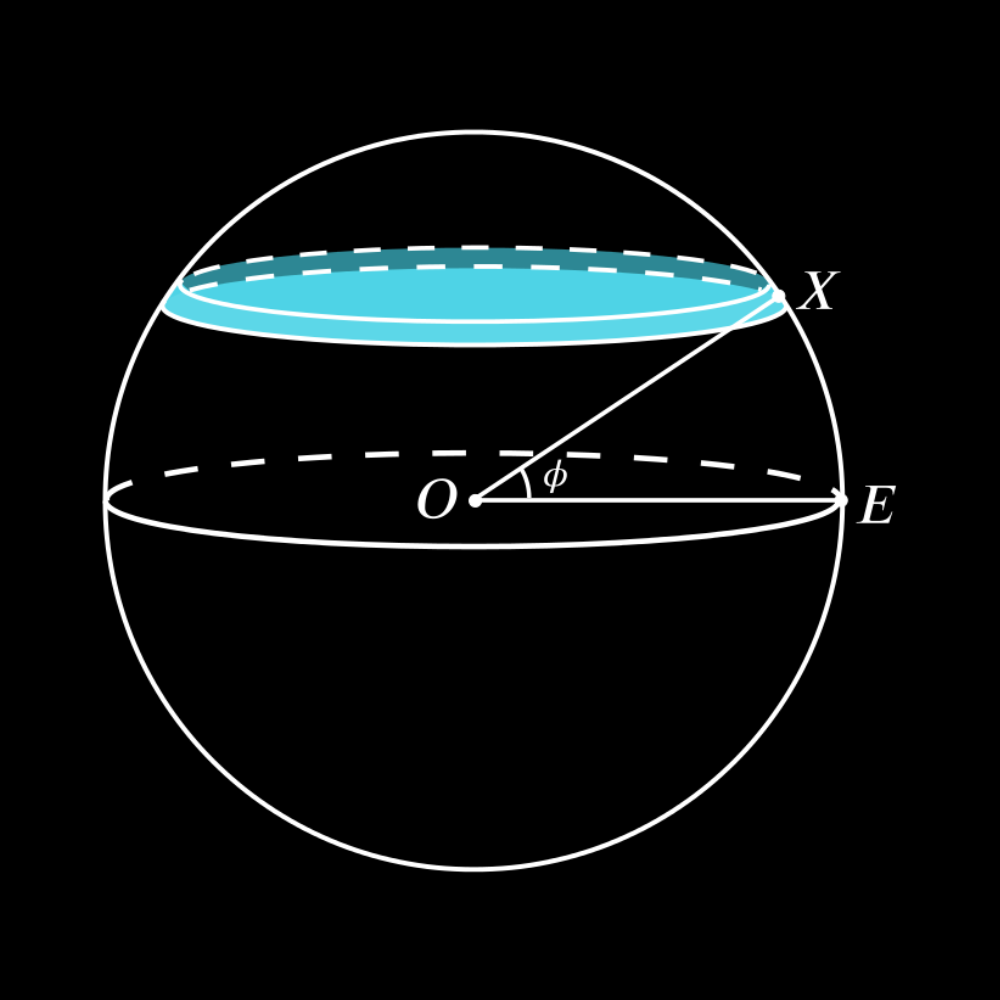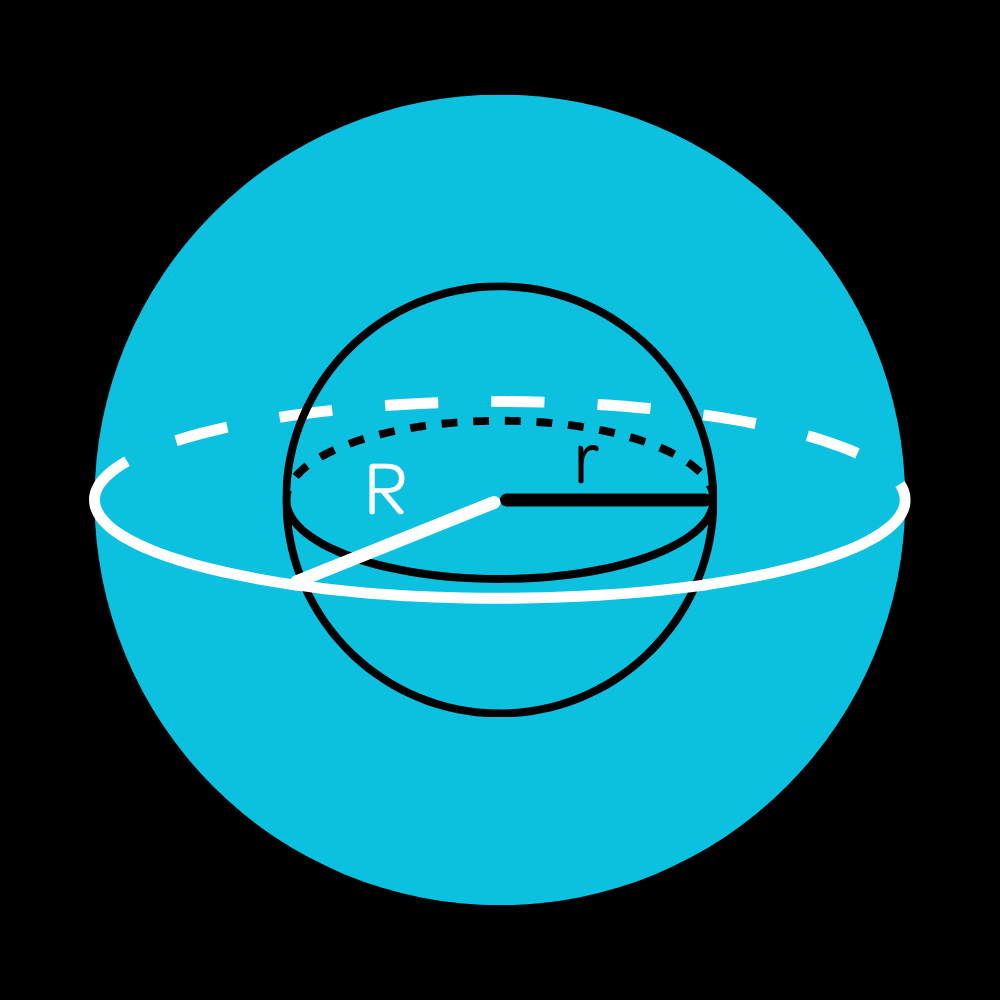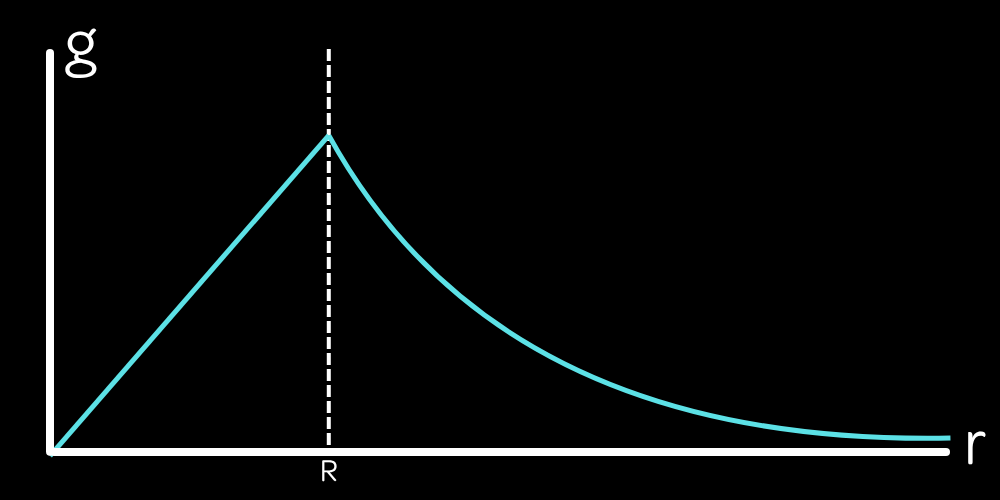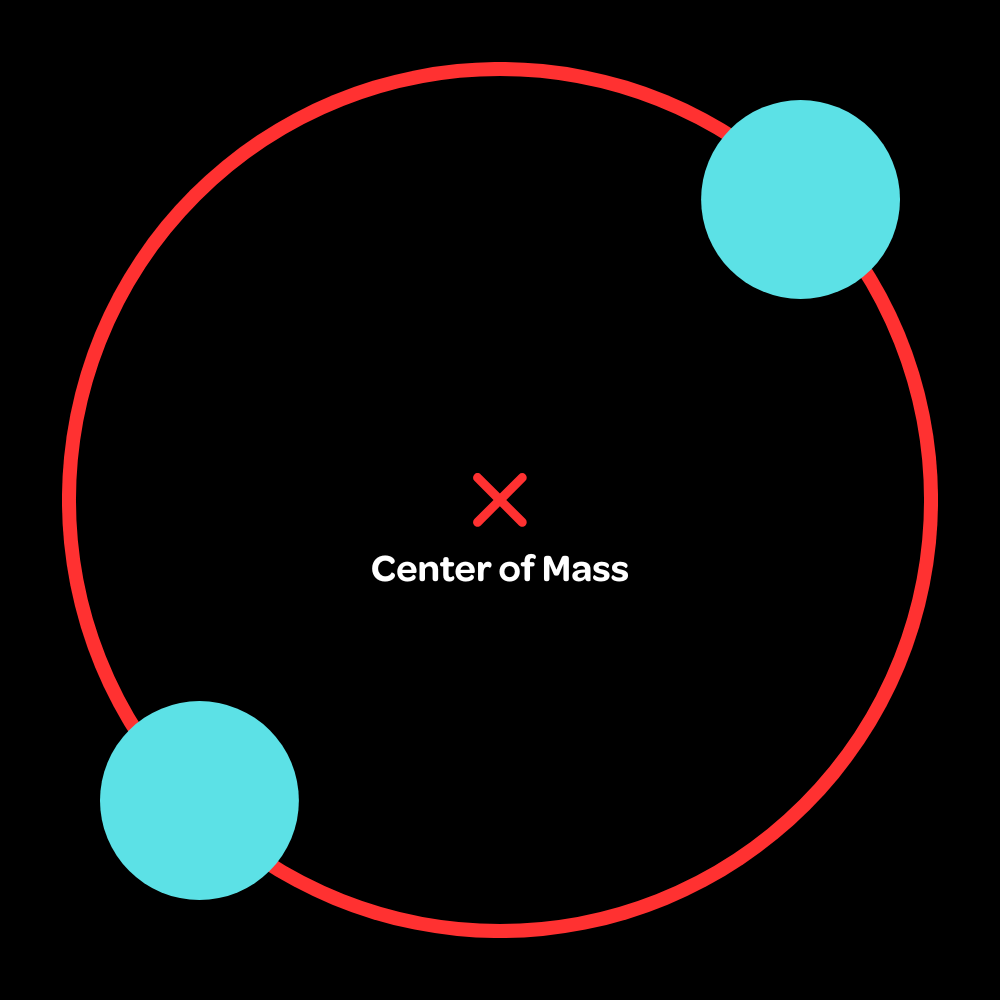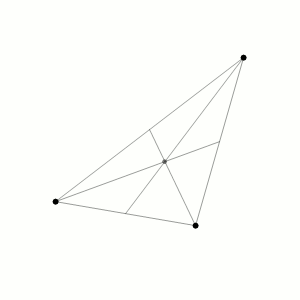Newton's Law of Universal Gravitation
Introduction
Isaac Newton knew a ton about forces, but he also investigated gravity. Our concept of gravity to this point is that it's a constant field with field strength $g = 9.81 ~\textrm{m/s}^2$, but this is only true if you're standing on the surface of the Earth. (Technically, this value also varies depending on where you are on Earth.) However, if you go a significant distance upwards, the gravitational force will get weaker.The Newton apple story is often cited as an instance of Newton "discovering" gravity, but this couldn't be further from the truth. Do you really think people didn't know that objects tended to fall down before then? No, Newton realized that the gravity that causes an apple to fall is the same that causes the moon remain in orbit around the Earth. Take a look at this demo. You can use your mouse to manipulate the "planets", but good luck catching them! Also, do NOT let the bodies clip into each other. They will disappear, and you will have to reset.
Gravity Demo
Gravity
But first, a more rigorous discussion of what gravity really is. We know gravity causes things to fall, so let's start there. Gravity tends to pull bodies closer to each other. This leads us to our first conclusion, that as far as we know gravity is always attractive, tending to pull bodies closer to each other. It also gets weaker with distance, though this might not be entirely obvious since you and I cannot easily go far away from the Earth. (Assuming you don't have access to a rocket.) These are quantitatively summed up by Newton.From some data he borrowed from Robert Hooke (who later got into an argument with Newton over this exact issue of who deserved the recognition), Newton was able to formulate his Law of Universal Gravitation:
$$F_g = G \dfrac{m_1m_2}{r^2}$$
$G$ is a new constant, the universal gravitation constant, given by $G = 6.67 \times 10^{-11}$. This is a very small value, which explains why it takes something the size of a planet to produce a noticeable gravitational pull. The law is often called the inverse-square law because it depends inversely on the square of the separation between the two bodies. We also introduce a quasi-new quantity, the gravitational field strength:
$$g = G \dfrac{M}{R^2}$$
This measures the gravitational field at a particular distance from an object.

Remember Newton's third law? Well, it still applies here! The Earth exerts a force on you, and you exert that same force back on the Earth. However, the Earth has too much mass to really care, so we usually don't think of ourselves as exerting a gravitational force on the Earth. It's important to remember this fact (which applies to any two objects that have mass), however.
Shell Theorem
Now, there is a theorem called the shell theorem that enables us to treat spheres as just point objects, which allows us to easily use Newton's Law of Universal Gravitation on them. All you need to know at this level is that this theorem allows us to treat a sphere or spherical shell as having all of its mass at its center, and the distance between that center and any other object in question is the separation of the bodies $R$ in the equation.The one key exception (and the second part of the shell theorem) to this is that there is no gravitational field inside a spherical shell. This makes a sort of sense if you think about it, as the parts of the sphere you're closer to exert a stronger pull but are lesser in area, while the parts further away are more numerous but exert a lesser pull in the other direction, which cancels everthing out.
Using this theorem, we can actually figure out what the gravity inside of a planet is.
